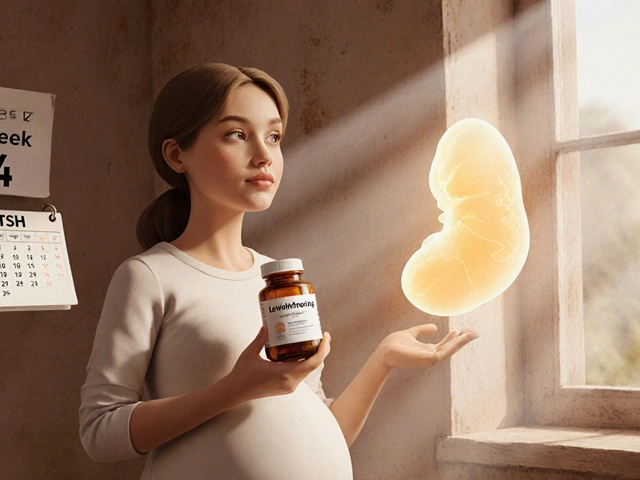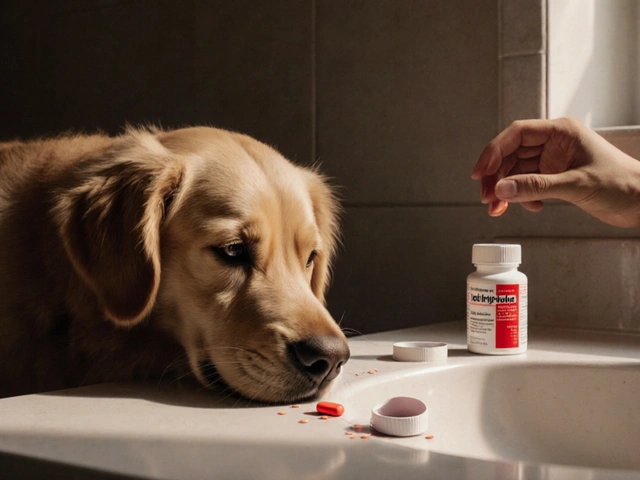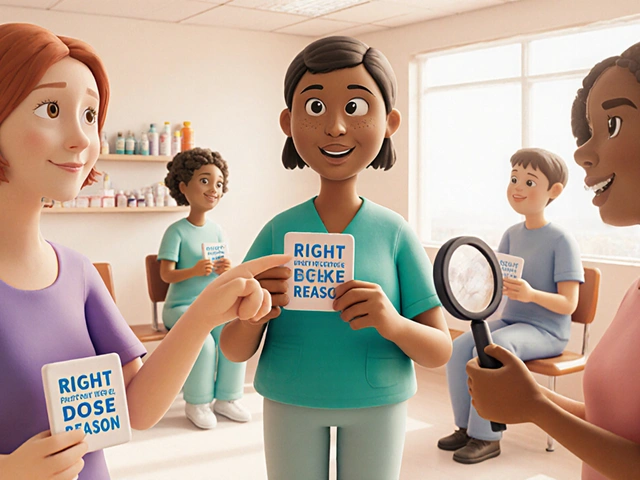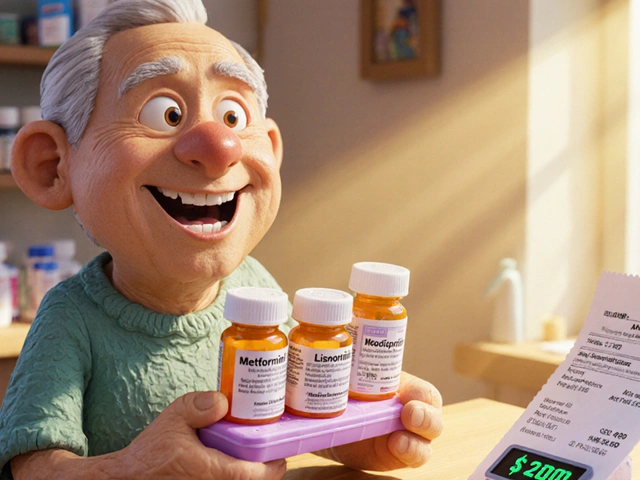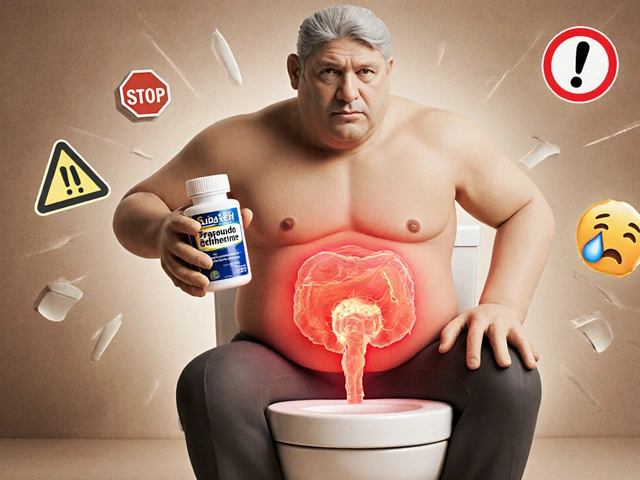Every year, thousands of people die not from taking one dangerous drug, but from mixing two or more that seem harmless on their own. It’s not just street drugs-prescription pills, over-the-counter meds, and even alcohol can turn deadly when combined. You might think, "I’ve had a drink with my painkiller before, no big deal," but the science says otherwise. Some drug combinations don’t just add up-they multiply the risk, pushing your body past its breaking point without warning.
Why Mixing Drugs Is More Dangerous Than You Think
The body doesn’t handle multiple drugs like a playlist. It processes them like a chemical reaction. When two substances interact, they can create new toxins, amplify side effects, or shut down vital systems. The most common killers? Combinations that slow down breathing or wreck the heart. Take opioids and alcohol. Both depress the central nervous system. Alone, they cause drowsiness. Together, they can stop you from breathing. A 2021 study in the Journal of Clinical Pharmacology found this combo increases respiratory depression risk by 4.5 times compared to either drug alone. That’s not a slight increase. That’s a death sentence waiting to happen-even with a single drink and one prescribed pill.The Deadliest Duo: Opioids and Benzodiazepines
If you’re on oxycodone, hydrocodone, or fentanyl patches, and your doctor also prescribed Xanax, Valium, or Ativan for anxiety or sleep, you’re in a high-risk zone. The Centers for Disease Control and Prevention (CDC) found that 30.1% of opioid-related overdose deaths in 2020 also involved benzodiazepines. That’s nearly one in three. These drugs work on the same brain receptors. Together, they cause extreme sedation, confusion, loss of coordination, and respiratory failure. Even if you’ve taken both safely before, tolerance changes. A dose that was fine last month can kill you this month. The FDA now requires all opioid packaging to include bold warnings about this exact combo. If your prescription doesn’t say it, ask your pharmacist.The Speedball Myth: Cocaine and Heroin
There’s a dangerous myth that cocaine (a stimulant) and heroin (a depressant) cancel each other out. They don’t. They create a speedball-a rollercoaster that tears your body apart. Cocaine spikes your heart rate and blood pressure. Heroin slows your breathing. Your body gets pulled in two directions at once. The result? A heart under massive strain, trying to pump blood while your lungs struggle to supply oxygen. The National Institute on Drug Abuse reports that 50% of cocaine overdoses in the U.S. in 2021 involved heroin. This combo has killed celebrities like River Phoenix and Chris Farley-not because they took too much, but because their bodies couldn’t handle the chaos. Worse, the liver turns this mix into cocaethylene, a toxic byproduct that’s 25% more likely to cause sudden death than cocaine alone. It lingers longer, increases seizure risk, and damages your liver. Even if you feel fine after using, your organs are still paying the price.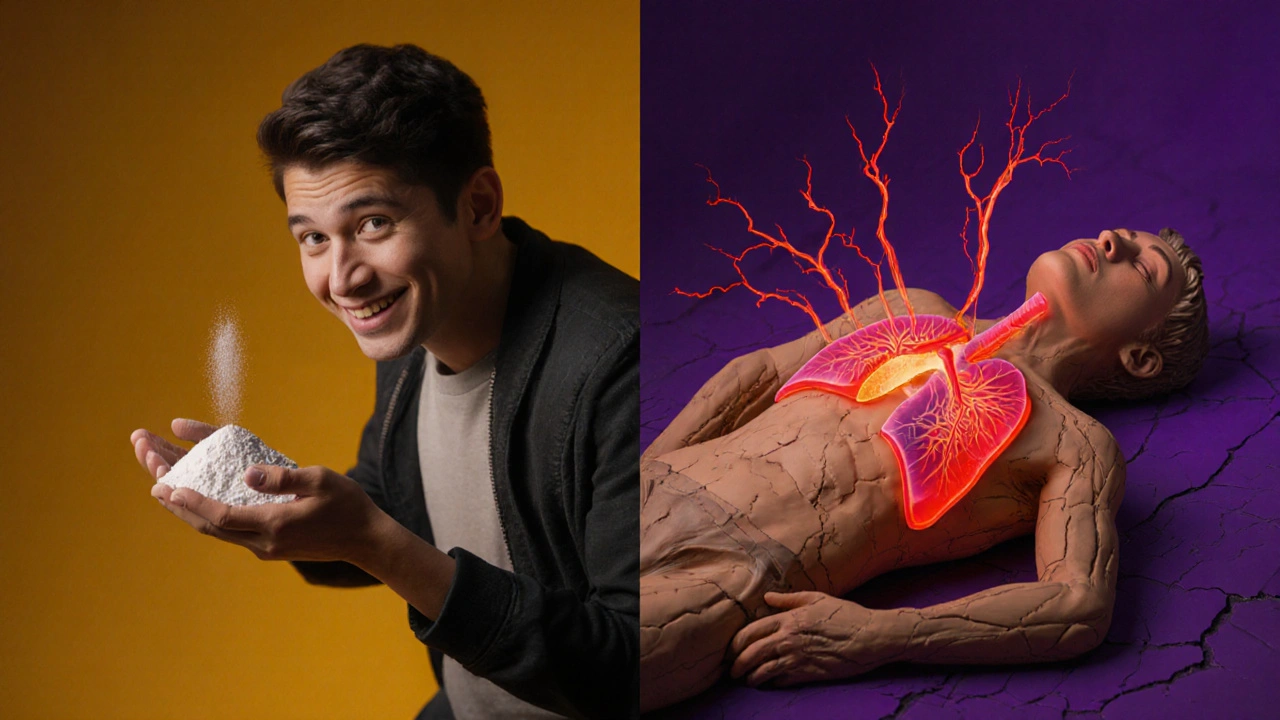
Alcohol + Cocaine = Hidden Poison
You don’t have to use heroin to be in danger. Mixing alcohol and cocaine is just as deadly-and far more common. People do it because they think alcohol dulls the crash after cocaine. It doesn’t. It makes it worse. As the liver breaks down both substances, it produces cocaethylene. This compound doesn’t just make you feel more euphoric-it increases your risk of heart attack, liver failure, and sudden death. Studies show 65% of chronic users of this combo develop liver damage. And because alcohol masks how high you are, you’re more likely to take more cocaine, thinking you’re still in control. Symptoms? Irregular heartbeat over 140 bpm, seizures, vomiting blood, extreme confusion, and unconsciousness. If you’ve ever passed out after drinking and doing coke, you weren’t just "drunk." You were in medical emergency territory.Antidepressants and Alcohol: A Silent Killer
Many people don’t realize their antidepressants can turn alcohol into a hazard. Duloxetine (Cymbalta) and venlafaxine (Effexor) are commonly prescribed for depression and anxiety. But when mixed with alcohol, they increase liver toxicity by up to 40%. That’s not just a headache-it’s liver failure waiting to happen. Even worse, alcohol lowers the threshold for overdose on these medications. A 2018 study in the Journal of Clinical Psychopharmacology found people on venlafaxine were 25% more likely to die from alcohol poisoning than those not taking the drug. That means a few drinks that used to be "fine" can now be lethal. If you’re on any SSRI or SNRI, don’t assume "moderate" drinking is safe. The line between safe and deadly is thinner than you think.Buprenorphine and Alcohol: A Dangerous Trap
Buprenorphine is used to treat opioid addiction. It’s supposed to help people recover. But if you drink while taking it, you undo all the progress. This combo causes severe drops in blood pressure, dangerously slow breathing (under 10 breaths per minute), and deep sedation that can lead to coma. The SA Health Department warns: "The more alcohol in your body, the less heroin you need to overdose." The same applies to buprenorphine. Even one glass of wine can be enough to trigger respiratory arrest. People in recovery often think, "I’m not using opioids anymore, so I can drink." That’s a deadly assumption. Your tolerance is gone. Your body is still sensitive. Alcohol can kill you just as easily now as it did before.
What to Do If You’re Taking Multiple Medications
If you’re on more than one prescription, or you use alcohol, marijuana, or over-the-counter sleep aids, here’s what you need to do:- Ask your doctor or pharmacist to run a full drug interaction check every time a new medication is added-even if it’s just a cold pill.
- Write down everything you take: pills, supplements, alcohol, vaping, cannabis, even herbal teas. Bring this list to every appointment.
- Never assume "natural" means safe. Kava, valerian root, and melatonin can all interact dangerously with prescription drugs.
- Use a drug interaction checker like WebMD or Medscape before taking anything new. These tools are free and updated daily.
- Know the signs of overdose: slow or shallow breathing, blue lips or fingertips, unresponsiveness, gurgling sounds. If you see these, call 999 immediately and give naloxone if you have it.
How the System Is Trying to Help
It’s not all doom and gloom. The system is catching up. Since 2019, Medicare Part D plans have been required to flag opioid-benzodiazepine combinations in their prescription systems. That’s led to an 18% drop in dangerous co-prescribing, according to a 2021 JAMA study. The CDC now tracks polysubstance overdoses in real time. Their 2023 data shows 78.3% of fatal opioid overdoses involved another substance-usually benzodiazepines, cocaine, or alcohol. That’s why harm reduction programs now hand out naloxone kits with clear warnings about mixing drugs. AI-powered tools are coming fast. By 2025, most electronic health records will automatically warn doctors if a patient is prescribed two risky drugs together. But until then, you’re your own best protector.Final Reality Check
You don’t need to be a drug addict to be at risk. You just need to be taking more than one thing-and not knowing how they work together. A person on oxycodone for back pain who has a glass of wine with dinner. A woman on Xanax who drinks to sleep. A man on antidepressants who has a few beers on the weekend. These aren’t "addicts." They’re regular people trying to manage pain, anxiety, or stress. And they’re in danger. The truth? There’s no safe way to mix these drugs. Not "sometimes." Not "in small amounts." Not "if I’m careful." The risk is real, measurable, and deadly. If you’re unsure, don’t take the chance. Talk to someone. Get help. Your life isn’t worth the gamble.Can I have one drink while taking painkillers?
No. Even one standard drink (like a small glass of wine or half a pint of beer) can significantly increase the risk of respiratory depression when combined with opioids like oxycodone or hydrocodone. The interaction is unpredictable and can lead to sudden breathing failure, even if you’ve done it before without issues.
Is it safe to mix alcohol with antidepressants like Zoloft or Prozac?
It’s not recommended. While SSRIs like Zoloft and Prozac don’t cause the same level of respiratory depression as opioids, alcohol can worsen depression, increase dizziness, and raise the risk of liver damage over time. It can also make you feel more sedated or increase the chance of risky behavior. Always check with your prescriber.
What should I do if someone overdoses from mixing drugs?
Call 999 immediately. If you have naloxone (Narcan), administer it right away-even if opioids aren’t confirmed, it’s safe to use and may save a life. Keep the person awake and on their side to prevent choking. Do not leave them alone. Emergency responders need to know exactly what substances were taken to give the right treatment.
Are over-the-counter meds like ibuprofen or sleep aids risky to mix?
Yes. Sleep aids like diphenhydramine (Benadryl, ZzzQuil) are CNS depressants and can dangerously amplify the effects of alcohol, opioids, or benzodiazepines. Ibuprofen can increase bleeding risk when mixed with blood thinners or alcohol. Always read labels and check interactions before combining any medication, even if it’s sold without a prescription.
Can I use a drug interaction checker app instead of asking my doctor?
Use apps like WebMD or Medscape as a tool, not a replacement. They’re excellent for quick checks, but they don’t know your full medical history, liver or kidney function, or other health conditions. Always confirm with a pharmacist or doctor, especially if you’re on multiple medications or have chronic illness.


